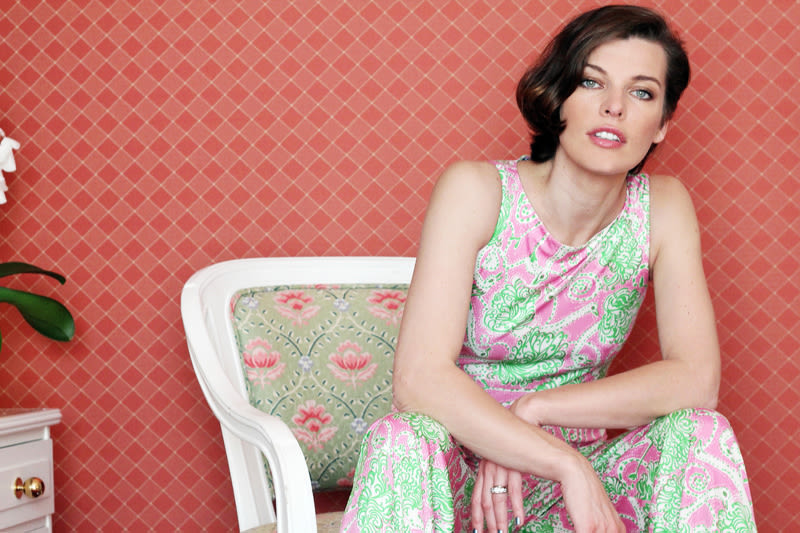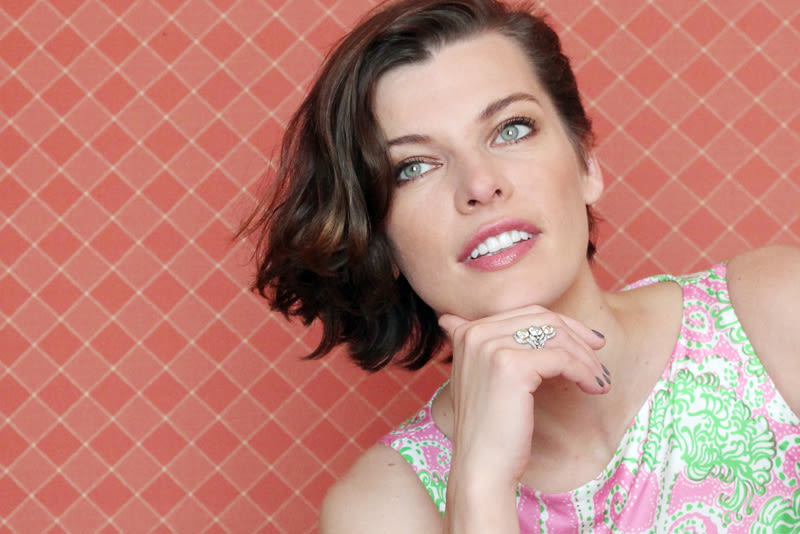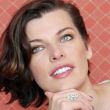“I was eleven when I started working. I was still playing with dolls, so I didn’t really care much about fashion. For me, that was the most important thing—well, let’s say for my mom, because at the time my mom was the main person making sure I was working and disciplined. I started acting classes when I was nine, started auditioning and got my first film at eleven, but the modeling career kind of took off before anyone had seen The Night Train to Kathmandu on the Disney Channel. It was my first movie and it was a disaster; it’s painful to watch. I was a horrible actress when I was a kid, as most kids are. For my mom, education was the most important thing. She said, ‘You know, the modeling stuff is all well and good and a pretty face will get you through the door, but what are you going to do when you get there? What’s gonna happen when you open your mouth?’ Also, when you work with these photographers, when you go into a career like modeling, you can’t just go in empty-handed or empty-headed. There has to be something behind your eyes or else you’re just going to be fly-by-night. It was always about reading literature, looking at art books, looking at framing…Who is this photographer? Where did they come from? What kind of lighting did they use? My mom always had a collection of art and photography books, saying, ‘Ok, this is how this person works, this is how that person works,’ or asking, ‘Why did Avedon do In the American West?’ I was like, ‘Why?!’ And she said, ‘Because that’s the real America. He was interested in real people—he wasn’t shooting glamour all the time.’ Or we’d look at Egon Schiele paintings, the most perfect example of how to fill a frame beautifully. So, you know, I came into this world with a lot of inspiration already; I’ve always loved to draw and I was constantly keeping diaries and drawing. I think that was important because, as a model, a lot of girls think, ‘I can just show up and be beautiful.’ I always showed up with the intent of, I’m a muse and I will inspire you because I am inspiring myself. Because if you’re not inspired by yourself, how are you going to inspire other people?
When Luc [Besson] and I first started talking about the hair for The Fifth Element and what the whole image was going to be, I immediately called my hairstylist friend Ward. This is back in the day when Ward was still really young and he had just invented the scissors. [Laughs] I called Ward in because I said, ‘You can only have somebody from the fashion industry do this, and they have to be the best,’ and at that point, Ward was at the top of his game and young and hungry and ready to do it. We came up with the idea of this flame—Luc wanted a flame for the hair. Ward made a really interesting choice to make the roots blond, which looked amazing for a photograph, and because he comes from the fashion industry, he was like, ‘Yeah, for a picture, it’s great!’ but how do you keep it up for six months? My hair grows so fast, so every week they’d have to redo my roots. And, at one point, I think the hairdressers went out for a cigarette and left me sitting in the chair cooking underneath the hat and I felt my hair getting hot, but I was like, ‘They must know what they’re doing.’ Finally, I said, ‘Oh, girls!’ and they went, Gasp! I guess they had forgotten about me and when they took the thing off, my hair was just falling out in clumps and I was pulling it out and pulling it out and they had to make a complete wig. So, in the movie when you see Leeloo clean and dry at the apartment on the computer eating chicken, I’ve got a wig on pretty much from that point onward—we only got a few weeks of shooting in with the haircut, and thank God we got the beginning, which is glorious. On the balcony and on the ledge, that’s all my real hair, thank God because to me, that is the best part of Leeloo, those first twenty minutes that she’s in the movie. When I came back from The Fifth Element, I signed with L’Oréal. I think that was really our first year together—it was kind of a trip for them with my orange hair.
Definitely, my beauty routine has always been to start from the inside out. You have to take care of yourself, what you eat, what you drink, you know? Then, of course, there’s the normal routine of washing your face, moisturizing, and if you have the luxury of getting facials and massages, that’s perfect, too. But I don’t really, because I’m constantly working and traveling and I can’t afford to go to a facialist and be all sore and red for a few days. So I just use a lot of exfoliators to keep my skin fresh. I’m very picky about what I put on my face. At the same time, I feel like you have to always use different things, because once your skin gets too used to something it sort of deadens the effect of it, so I try to cycle between lots of products. One day I’ll use one type of serum and another day I’ll use something else; one day I’ll use one type of moisturizer and the next I’ll do something else. Obviously you should use whatever works for you, but I think it’s important to circulate what you’re putting on your skin. It’s the same with training. My trainer says, ‘If you eat the same food every day…’—which we normally do; I’ve been having Caesar salads with chicken every day since I’ve gotten here [Cannes]—‘your metabolism stops working really hard because it gets used to it. You have to shock your metabolism constantly.’ If your diet is always different, your body doesn’t know what’s coming at it. Today it’s fish, tomorrow it’s a little bit of chicken! The next day it’s beans! You want your body to always be working, your metabolism to be high, because when your metabolism is high everything just renews more. Any good moisturizer works. L’Oréal has a beautiful moisturizer called Youth Code that you can get at the pharmacy, which really takes all the great elements from the thousand-dollar ones and makes it into something affordable for every woman. I’ve been an ambassador, a spokesperson, for L’Oréal for about eighteen years now. It’s been an amazing relationship—really symbiotic and I’ve been really proud to be part of the family. And I get really awesome makeup out of it.
I wear makeup every day, but just minimal. I’m inspired by European women in that sense—New York women, too. Just very light on the skin. In general, red carpets are not my thing. I like to perform, I love to create. I have my Telescopic Mascara, which I’ve tweeted about because it’s just genius and I love what it does to my eyes. And L'Oréal has these really beautiful eye shadow pigments from the Infallible line—they’re really, really metallic. And they stay on all day without creasing--I’m wearing one now, in a slate color. I always use a brush to apply because I have really sweaty hands all the time and brushes are easier—plus I’ve grown up using them. For lips, I’m not the biggest on nude colors, I like something a little bit pink-y. Colour Riche does these really sweet pink-y colors, more in red but natural, not crazy. Sometimes I like to do no eye and just a really red lip for day, but normally, it’s some mascara and Colour Riche on my lips and on my cheeks for a glossy sheen. A lot of times, I’ll put the residue on my eyelids, too, if I don’t want to deal with eye shadow. I have to say, lipstick is the one thing, or lipstick and concealer are the two things I would never leave the house without. I like to use a concealer with a bit of yellow in it to cover the redness on my chin and around my nose because I have broken capillaries from smoking for many years, which thank God I’m done with. But, really, a good lip color will go everywhere. It looks shiny and healthy and pretty and kind of sun-kissed.”
Milla Jovovich, wearing Prada, photographed by Emily Weiss at the Hotel Martinez, Cannes, France May 24th 2012.




